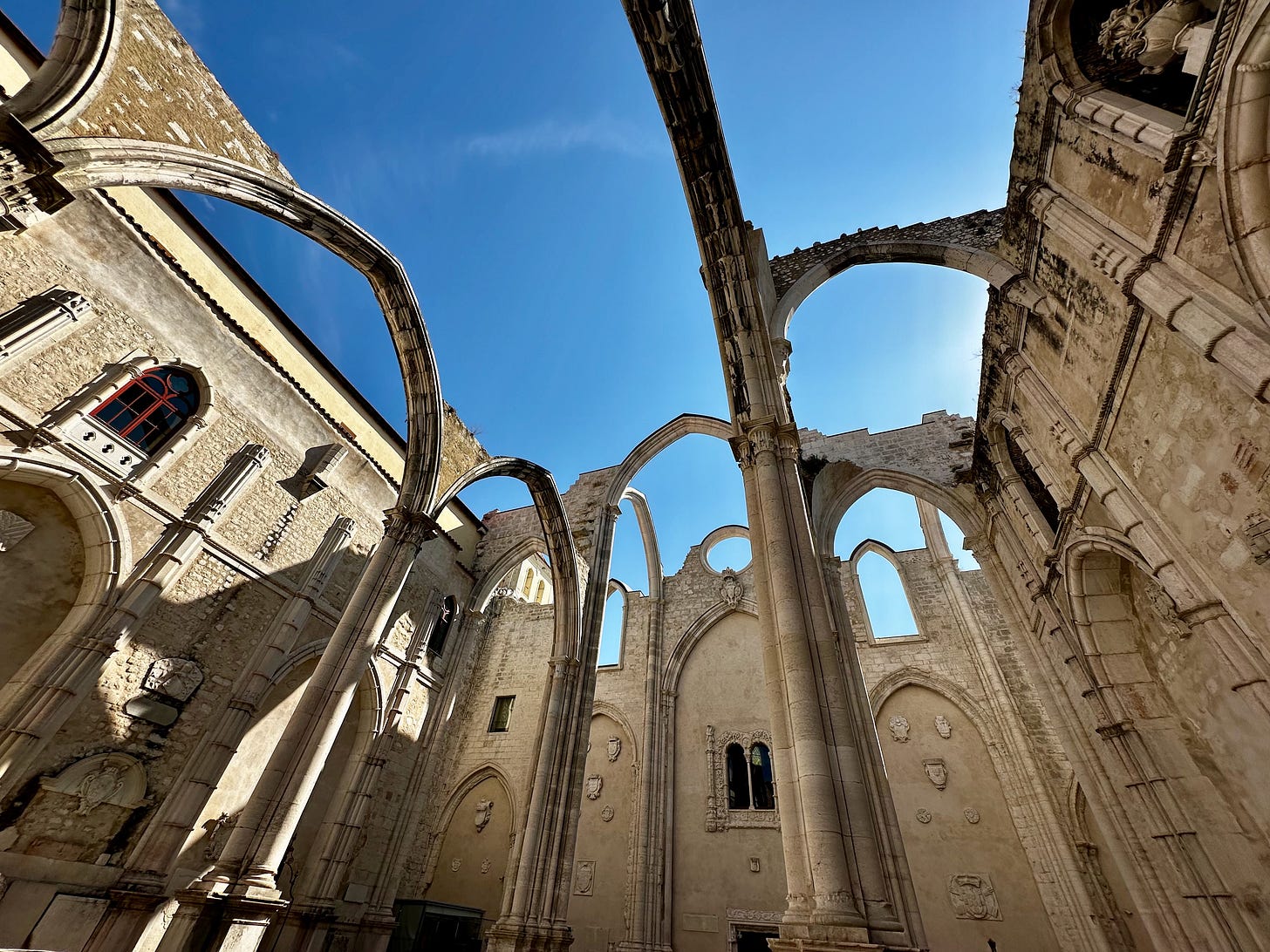Ruins That Breathe: Long-Awaited Visit to Lisbon’s Carmo Convent
After missing it on my last trip, I finally stepped inside the skeletal beauty of the Carmo Archaeological Museum — and discovered one of the most moving places in Lisbon
I had seen it before without really seeing it. On my last trip to Lisbon, I’d even passed right by the entrance — the Gothic stone archway standing solemnly at the edge of Largo do Carmo. I’d looked at it from the top of the Santa Justa Elevator, its broken bones reaching skyward. I’d admired it from a distance, promising myself I’…




